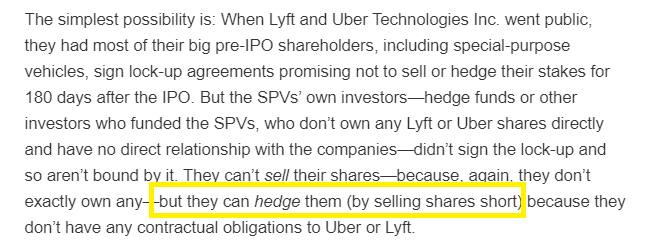
How to get URL link on X (Twitter) App


 Characteristics of Zombie VCs
Characteristics of Zombie VCs
 Chart: PitchBook diagram of VC cashflows showing massive gap in liquidity.
Chart: PitchBook diagram of VC cashflows showing massive gap in liquidity.

 Here's the trendlines for showing the year-over-year TOTAL deal percentage. Up and to the right.📈
Here's the trendlines for showing the year-over-year TOTAL deal percentage. Up and to the right.📈 

 Step 1: Return Capital to LPs
Step 1: Return Capital to LPs

 Law of VC Database: roamresearch.com/#/app/Funds/pa…
Law of VC Database: roamresearch.com/#/app/Funds/pa…

 1) Liquidation Preferences
1) Liquidation Preferences

https://twitter.com/scienceisstrat1/status/16276610034491473932/ In 2021, VCs closed a record-setting 270 first-time funds raising an aggregate of $16.8B


 There are two ways to approach financial securities.
There are two ways to approach financial securities.

https://twitter.com/ChrisHarveyEsq/status/1412490535541956609?s=20




 2/ After five years of testing pre-money Safes, YC made two major changes to the Original Safe:
2/ After five years of testing pre-money Safes, YC made two major changes to the Original Safe:

https://twitter.com/ChrisHarveyEsq/status/1331236377946689538
 Market Terms for Emerging Venture Funds:
Market Terms for Emerging Venture Funds:https://twitter.com/ChrisHarveyEsq/status/1107998912546308097?s=20
